Translation missing: en.collections.general.collection_label: View All Our Diabetic Footcare Products
According to most studies, more than half of the people with diabetes experience nerve damage. People with diabetes indeed have notoriously sensitive feet caused by nerve damage, also known as diabetic neuropathy. This neuropathy can lead to increased sensitivity, tingling sensations, numbness, pain, and discomfort.
People with diabetes can develop diabetic neuropathy, but these risk factors make them more likely to get nerve damage.
- Poor blood sugar control - uncontrolled blood sugar means your blood sugar is too high and puts you at risk of every diabetes complication that can damage your nerves.
- Being overweight - a body weight more significant than what is considered healthy (Having a body mass of 25 and above) can increase your risk of diabetic neuropathy.
- Smoking shrinks and hardens your arteries, causing you to reduce the blood flow in your legs and feet, resulting in difficulty in healing wounds in your body and damaging your peripheral nerves.
- Kidney Disease - the high sugar level in the blood damages tiny filtering units of each kidney and eventually leads to kidney failure. Around 20 - 30 percent of people develop kidney disease, leading to nerve damage.
- A history of diabetes in the family - type 2 diabetes can be hereditary. This doesn't guarantee you will develop it if your mother or father has or has diabetes, but you have a greater chance of having type 2 diabetes.
What Happens When You Have Diabetic Neuropathy?
Researchers think that uncontrolled high blood sugar levels cause diabetic neuropathy. The sustained damage affects the nerves, causing them to interfere with their ability to send signals to the brain properly. High blood sugar also damages the walls of the small blood vessels called capillaries, which causes them to weaken. These are the vessels that supply oxygen and nutrients to the body. That's why it's so easy for people with diabetes to become unaware of the state of their hands or, most of the time, their legs and feet.
People with diabetes can easily have open wounds, sores, cuts, and blisters on their legs and feet without noticing immediately. And with these diabetic foot ulcers going unnoticed, infections and other serious complications may arise.
Can Diabetic Neuropathy Be Prevented?
It is better to be guided by a specialist or a doctor, but the suggestions that can reduce the risk of having diabetic neuropathy include:
- Maintain blood sugar levels within the target range. This ranges within 70 to 99 mg/dL (3.9 to 5.5 mmol/L).
- Work out or exercise regularly, keep your body active this helps the blood to circulate in your body better.
- Maintain a weight that is suitable for your height.
- STOP SMOKING, smoking destroys your body, and your body needs to stay healthy to function well.
- Reduce your blood pressure and lipid (fat) by changing your lifestyle and diet. This may also involve medications you must take as prescribed by your doctor.
- Have an appointment with a doctor if you feel any early symptoms, including pain or numbness in your feet, to take preventative measures.
- Have your feet checked by a specialist such as a doctor, podiatrist, or diabetes educator, or if you have symptoms and signs of problems with your feet and legs.
What To Look Out For
Here are some things that people with diabetes need to look out for to know if they are experiencing diabetic foot ulcers caused by diabetic neuropathy.
- Lost your ability to feel pain, heat, and cold
- Skin changes. Dry and easily cracked skin
- Calluses, warts, or corns
- Poor circulation or poor blood flow
- Sores or wounds are called Foot ulcers. Mostly found on the ball of the foot or the bottom of the big toe
- Ingrown toenails
- Infections
How To Prevent Diabetic Neuropathy Complications
Here are some things you can do to prevent experiencing Diabetic Foot Ulcers:
- Check your feet regularly. Schedule a time every day when you can check your foot for sores, blisters, wounds, and callouses. And remember, don't treat them by yourself, no matter how minor it is
- Bathe and clean your feet properly and then keep them dry. This also includes your toenails.
- Make sure you position yourself in a way that blood flows properly.
- Check your blood sugar regularly.
- Intake of food and supplements that help lower blood glucose levels.
- Use creams and ointments that help soothe pain and discomfort.
- Wear diabetic socks and shoes. There are lots of footwear available that's made especially for people with diabetes. These socks and shoes offer extra support and cushion and are non-binding.
Are Diabetic Socks Better Than Regular Socks?
High-quality diabetic socks are made from a blend of comfortable and durable materials. In addition to being made from comfortable and breathable fabrics, diabetic socks are made with as few seams as possible. Seams can irritate and cause pressure points on sensitive diabetic feet, so diabetic socks must limit the number of seams.
Here are some traits that regular socks have that may work well for people who do not have diabetes but would not work for people who have diabetes:
- Seams that may irritate the feet and the toes
- Made of Non-wicking material like cotton. It does not repel moisture
- No padding
- Heavy elastic that restricts blood flow
Compared to how most Diabetic socks are made:
- Seamless or have flat seams
- Moisture-wicking
- Made with non-elastic binding
- Padded soles
- Antibacterial Properties
Different Types of Diabetic Socks
A lot of these socks would vary depending on length and width. And the difference in size serves multitudes of purposes.
- Soft and wide socks - These are recommended for people suffering from the effects of diabetes, circulatory problems, edema, and neuropathy.
- Ankle socks - These pairs of socks are specifically designed for diabetic patients shaped to fit their ankles and provide comfort throughout the day
- Crew socks - These specially designed socks have cushioning to help prevent injury to the feet and lower legs whether you're doing feet-friendly physical activities.
- Light compression socks - These are specially designed to give comfort to tired and aching feet and legs
Other Types Of Wellness Products For People With Diabetes
- Creams and ointments that can be used as quick relief from pain and discomfort
- Supplements that may help lower blood sugar levels
Where To Get Diabetic Socks
Diabetic Sock Club offers high-quality, soft, non-binding diabetic socks in different shapes, forms, and colors to cater to your needs. You may even fill out a quiz to see which type of socks would suit you the best. We also have wellness products such as DSC Hemp Cream For Neuropathy Aches & Nerve Pain and DSC Blood Sugar Ultra Support Supplement.
Diabetic Foot Health is crucial, no matter how minor it may seem to the naked eye. People must stay on top of their feet condition and take the necessary steps to prevent more significant issues, such as pain, discomfort, and infections. Wearing the proper footwear, like diabetic socks, is vital to improving your quality of life.
-
Men's Cotton Diabetic Crew Socks (6 Pair) - Large (shoe size 9-12) / White
- Translation missing: en.products.product.regular_price
- $79.95
- Translation missing: en.products.product.sale_price
- $39.99






-
Men's Cotton Diabetic Crew Socks (6 Pair) - Large (shoe size 9-12) / Black
- Translation missing: en.products.product.regular_price
- $79.95
- Translation missing: en.products.product.sale_price
- $39.99






-
Men's Cotton Diabetic Crew Socks (6 Pair) - Large (shoe size 9-12) / Grey
- Translation missing: en.products.product.regular_price
- $79.95
- Translation missing: en.products.product.sale_price
- $39.99






-
Men's Cotton Diabetic Crew Socks (6 Pair) - Large (shoe size 9-12) / Beige
- Translation missing: en.products.product.regular_price
- $79.95
- Translation missing: en.products.product.sale_price
- $39.99






-
Men's Cotton Diabetic Crew Socks (6 Pair) - Large (shoe size 9-12) / Brown
- Translation missing: en.products.product.regular_price
- $79.95
- Translation missing: en.products.product.sale_price
- $39.99






-
Men's Cotton Diabetic Crew Socks (6 Pair) - Large (shoe size 9-12) / Navy
- Translation missing: en.products.product.regular_price
- $79.95
- Translation missing: en.products.product.sale_price
- $39.99






-
Men's Ultra-Soft Upper Calf Diabetic Socks (4 Pair) - Large (shoe size 9-12) / White
- Translation missing: en.products.product.regular_price
- $79.95
- Translation missing: en.products.product.sale_price
- $39.99


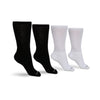
-
Men's Ultra-Soft Upper Calf Diabetic Socks (4 Pair) - Large (shoe size 9-12) / Black
- Translation missing: en.products.product.regular_price
- $79.95
- Translation missing: en.products.product.sale_price
- $39.99



-
Men's Ultra-Soft Upper Calf Diabetic Socks (4 Pair) - Large (shoe size 9-12) / Assorted
- Translation missing: en.products.product.regular_price
- $79.95
- Translation missing: en.products.product.sale_price
- $44.99



-
Women's Cotton Diabetic Crew Socks (6 Pair) - Medium (shoe size 7.5-10) / White
- Translation missing: en.products.product.regular_price
- $79.95
- Translation missing: en.products.product.sale_price
- $39.99





-
Women's Cotton Diabetic Crew Socks (6 Pair) - Medium (shoe size 7.5-10) / Black
- Translation missing: en.products.product.regular_price
- $79.95
- Translation missing: en.products.product.sale_price
- $39.99





-
Women's Cotton Diabetic Crew Socks (6 Pair) - Medium (shoe size 7.5-10) / Grey
- Translation missing: en.products.product.regular_price
- $79.95
- Translation missing: en.products.product.sale_price
- $39.99





-
Women's Cotton Diabetic Crew Socks (6 Pair) - Medium (shoe size 7.5-10) / Brown
- Translation missing: en.products.product.regular_price
- $79.95
- Translation missing: en.products.product.sale_price
- $39.99





-
Women's Cotton Diabetic Crew Socks (6 Pair) - Medium (shoe size 7.5-10) / Navy
- Translation missing: en.products.product.regular_price
- $79.95
- Translation missing: en.products.product.sale_price
- $39.99





-
Women's Ultra-Soft Upper Calf Diabetic Socks (4 Pair) - Medium (shoe size 7-10) / White
- Translation missing: en.products.product.regular_price
- $79.95
- Translation missing: en.products.product.sale_price
- $39.99


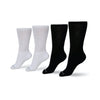
-
Women's Ultra-Soft Upper Calf Diabetic Socks (4 Pair) - Large (shoe size 10-13) / Black
- Translation missing: en.products.product.regular_price
- $79.95
- Translation missing: en.products.product.sale_price
- $39.99



-
Women's Ultra-Soft Upper Calf Diabetic Socks (4 Pair) - Medium (shoe size 7-10) / Assorted
- Translation missing: en.products.product.regular_price
- $79.95
- Translation missing: en.products.product.sale_price
- $44.99



-
Men's Cotton Diabetic Ankle Socks (6 Pair) - Medium (shoe size 6-8) / White
- Translation missing: en.products.product.regular_price
- $69.95
- Translation missing: en.products.product.sale_price
- $39.99



-
Men's Cotton Diabetic Ankle Socks (6 Pair) - Medium (shoe size 6-8) / Black
- Translation missing: en.products.product.regular_price
- $69.95
- Translation missing: en.products.product.sale_price
- $39.99



-
Men's Cotton Diabetic Ankle Socks (6 Pair) - Medium (shoe size 6-8) / Grey
- Translation missing: en.products.product.regular_price
- $69.95
- Translation missing: en.products.product.sale_price
- $39.99



-
Women's Cotton Diabetic Ankle Socks (6 Pair) - Medium (shoe size 7-10) / White
- Translation missing: en.products.product.regular_price
- $79.95
- Translation missing: en.products.product.sale_price
- $39.99



-
Women's Cotton Diabetic Ankle Socks (6 Pair) - Medium (shoe size 7-10) / Black
- Translation missing: en.products.product.regular_price
- $79.95
- Translation missing: en.products.product.sale_price
- $39.99



-
Women's Cotton Diabetic Ankle Socks (6 Pair) - Medium (shoe size 7-10) / Grey
- Translation missing: en.products.product.regular_price
- $79.95
- Translation missing: en.products.product.sale_price
- $39.99



-
Men's Over The Calf Compression Stocking Socks (1 Pair) - Large (shoe size 10-12) / White / 20-30mmhg (high)
- Translation missing: en.products.product.regular_price
- $41.95
- Translation missing: en.products.product.sale_price
- $29.99




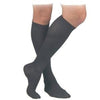

-
Men's Over The Calf Compression Stocking Socks (1 Pair) - Large (shoe size 10-12) / Black / 15-20mmHg (medium)
- Translation missing: en.products.product.regular_price
- $41.95
- Translation missing: en.products.product.sale_price
- $24.99






-
Men's Over The Calf Compression Stocking Socks (1 Pair) - Large (shoe size 10-12) / Navy / 15-20mmHg (medium)
- Translation missing: en.products.product.regular_price
- $41.95
- Translation missing: en.products.product.sale_price
- $24.99






-
Men's Over The Calf Compression Stocking Socks (1 Pair) - Large (shoe size 10-12) / Brown / 20-30mmhg (high)
- Translation missing: en.products.product.regular_price
- $41.95
- Translation missing: en.products.product.sale_price
- $29.99






-
Men's Over The Calf Compression Stocking Socks (1 Pair) - Large (shoe size 10-12) / Grey / 8-15mmHg (low)
- Translation missing: en.products.product.regular_price
- $31.95
- Translation missing: en.products.product.sale_price
- $19.99






-
Men's Over The Calf Compression Stocking Socks (1 Pair) - Medium (shoe size 8-10) / Tan / 20-30mmhg (high)
- Translation missing: en.products.product.regular_price
- $41.95
- Translation missing: en.products.product.sale_price
- $29.99






-
Men's Cotton Diabetic Crew Socks (Assorted) - Large (shoe size 9-12) / 6 Pair
- Translation missing: en.products.product.regular_price
- $79.99
- Translation missing: en.products.product.sale_price
- $46.95


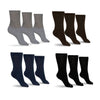
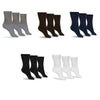

-
Men's Cotton Diabetic Crew Socks (Assorted) - Large (shoe size 9-12) / 9 Pair
- Translation missing: en.products.product.regular_price
- $99.95
- Translation missing: en.products.product.sale_price
- $59.95





-
Men's Cotton Diabetic Crew Socks (Assorted) - Large (shoe size 9-12) / 12 Pair
- Translation missing: en.products.product.regular_price
- $115.95
- Translation missing: en.products.product.sale_price
- $74.95





-
Men's Cotton Diabetic Crew Socks (Assorted) - Large (shoe size 9-12) / 15 Pair
- Translation missing: en.products.product.regular_price
- $135.95
- Translation missing: en.products.product.sale_price
- $89.95





-
Men's Cotton Diabetic Crew Socks (Assorted) - Large (shoe size 9-12) / 18 Pair
- Translation missing: en.products.product.regular_price
- $155.95
- Translation missing: en.products.product.sale_price
- $99.95





-
Men's Cotton Diabetic Ankle Socks (Assorted) - Large (shoe size 9-12) / 9 Pair
- Translation missing: en.products.product.regular_price
- $89.95
- Translation missing: en.products.product.sale_price
- $49.95

-
Women's Over The Calf Compression Stocking Socks (1 Pair) - Medium (shoe size 7-10) / White / 20-30mmhg (high)
- Translation missing: en.products.product.regular_price
- $51.95
- Translation missing: en.products.product.sale_price
- $29.99






-
Women's Over The Calf Compression Stocking Socks (1 Pair) - Medium (shoe size 7-10) / Black / 20-30mmhg (high)
- Translation missing: en.products.product.regular_price
- $51.95
- Translation missing: en.products.product.sale_price
- $29.99






-
Women's Over The Calf Compression Stocking Socks (1 Pair) - Medium (shoe size 7-10) / Brown / 20-30mmhg (high)
- Translation missing: en.products.product.regular_price
- $51.95
- Translation missing: en.products.product.sale_price
- $29.99






-
Women's Over The Calf Compression Stocking Socks (1 Pair) - Medium (shoe size 7-10) / Grey / 8-15mmHg (low)
- Translation missing: en.products.product.regular_price
- $31.95
- Translation missing: en.products.product.sale_price
- $19.99






-
Women's Over The Calf Compression Stocking Socks (1 Pair) - Medium (shoe size 7-10) / Tan / 20-30mmhg (high)
- Translation missing: en.products.product.regular_price
- $51.95
- Translation missing: en.products.product.sale_price
- $29.99






-
Women's Over The Calf Compression Stocking Socks (1 Pair) - Large (shoe size 10-13) / Navy / 15-20mmHg (medium)
- Translation missing: en.products.product.regular_price
- $41.95
- Translation missing: en.products.product.sale_price
- $24.99






-
Women's Cotton Diabetic Crew Socks (Assorted) - Medium (shoe size 7.5-10) / 6 Pair
- Translation missing: en.products.product.regular_price
- $79.99
- Translation missing: en.products.product.sale_price
- $46.95
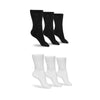

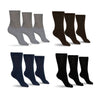
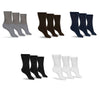
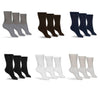
-
Women's Cotton Diabetic Crew Socks (Assorted) - Medium (shoe size 7.5-10) / 9 Pair
- Translation missing: en.products.product.regular_price
- $99.99
- Translation missing: en.products.product.sale_price
- $59.95





-
Women's Cotton Diabetic Crew Socks (Assorted) - Medium (shoe size 7.5-10) / 12 Pair
- Translation missing: en.products.product.regular_price
- $115.99
- Translation missing: en.products.product.sale_price
- $74.95





-
Women's Cotton Diabetic Crew Socks (Assorted) - Medium (shoe size 7.5-10) / 15 Pair
- Translation missing: en.products.product.regular_price
- $135.99
- Translation missing: en.products.product.sale_price
- $89.95





-
Women's Cotton Diabetic Crew Socks (Assorted) - Large (shoe size 10.5-13) / 18 Pair
- Translation missing: en.products.product.regular_price
- $115.95
- Translation missing: en.products.product.sale_price
- $99.95





-
Women's Cotton Diabetic Ankle Socks (Assorted) - Large (shoe size 10.5-13) / 9 Pair
- Translation missing: en.products.product.regular_price
- $89.95
- Translation missing: en.products.product.sale_price
- $49.99

-
Non-binding Cotton Diabetic Crew Socks (6-pair Pack) - Large (W 10-13 / M 9-12) / White
- Translation missing: en.products.product.regular_price
- $59.96
- Translation missing: en.products.product.sale_price
- $39.99






-
Non-binding Cotton Diabetic Crew Socks (6-pair Pack) - Large (W 10-13 / M 9-12) / Black
- Translation missing: en.products.product.regular_price
- $59.96
- Translation missing: en.products.product.sale_price
- $39.99






-
Non-binding Cotton Diabetic Crew Socks (6-pair Pack) - Large (W 10-13 / M 9-12) / Grey
- Translation missing: en.products.product.regular_price
- $59.96
- Translation missing: en.products.product.sale_price
- $39.99






-
Non-binding Cotton Diabetic Crew Socks (6-pair Pack) - Large (W 10-13 / M 9-12) / Brown
- Translation missing: en.products.product.regular_price
- $59.96
- Translation missing: en.products.product.sale_price
- $39.99






-
Non-binding Cotton Diabetic Crew Socks (6-pair Pack) - Medium (W 7.5-10 / M 6-8) / Navy
- Translation missing: en.products.product.regular_price
- $59.96
- Translation missing: en.products.product.sale_price
- $39.99






-
Non-binding Cotton Diabetic Crew Socks (6-pair Pack) - Large (W 10-13 / M 9-12) / Beige
- Translation missing: en.products.product.regular_price
- $59.96
- Translation missing: en.products.product.sale_price
- $39.99






-
Medical Compression Stockings (Over The Calf) - Large (shoe size 10-12) / White / 20-30mmhg (high)
- Translation missing: en.products.product.regular_price
- $41.95
- Translation missing: en.products.product.sale_price
- $29.99






-
Medical Compression Stockings (Over The Calf) - Large (shoe size 10-12) / Black / 15-20mmHg (medium)
- Translation missing: en.products.product.regular_price
- $41.95
- Translation missing: en.products.product.sale_price
- $24.99






-
Medical Compression Stockings (Over The Calf) - Large (shoe size 10-12) / Navy / 15-20mmHg (medium)
- Translation missing: en.products.product.regular_price
- $41.95
- Translation missing: en.products.product.sale_price
- $24.99






-
Medical Compression Stockings (Over The Calf) - Large (shoe size 10-12) / Brown / 20-30mmhg (high)
- Translation missing: en.products.product.regular_price
- $41.95
- Translation missing: en.products.product.sale_price
- $29.99






-
Medical Compression Stockings (Over The Calf) - Large (shoe size 10-12) / Grey / 8-15mmHg (low)
- Translation missing: en.products.product.regular_price
- $31.95
- Translation missing: en.products.product.sale_price
- $19.99






-
Medical Compression Stockings (Over The Calf) - Medium (shoe size 8-10) / Tan / 20-30mmhg (high)
- Translation missing: en.products.product.regular_price
- $41.95
- Translation missing: en.products.product.sale_price
- $29.99






Translation missing: en.collections.general.no_matches





















































